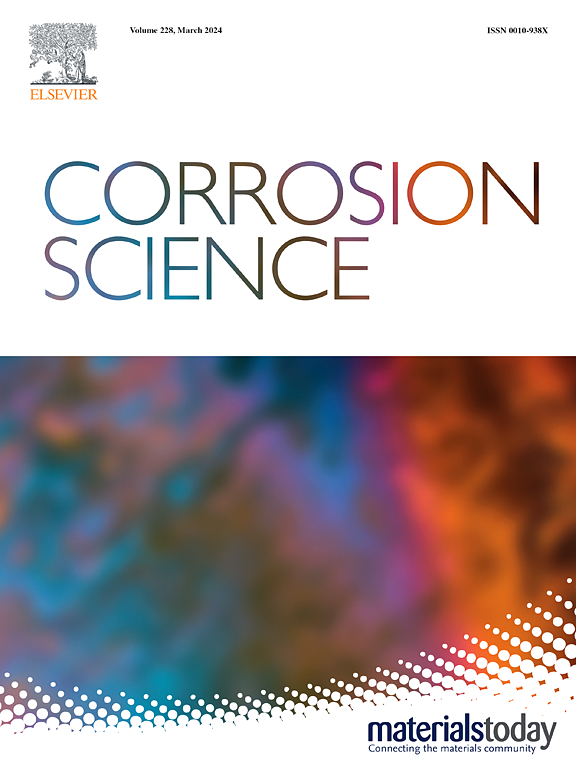A highly effective, economical and environmentally friendly composite corrosion inhibitor strategy for dynamic supercritical CO2 aqueous environments
IF 7.4
1区 材料科学
Q1 MATERIALS SCIENCE, MULTIDISCIPLINARY
引用次数: 0
Abstract
Supercritical carbon dioxide (sCO) corrosion remains a significant and ongoing impediment within the domain of carbon capture, utilization, and storage (CCUS) technologies, necessitating the advancement of robust mitigation tactics. Based on experimental and theoretical investigations, we have studied the inhibition performance of a composite formulation on X80 steel. The in-situ electrochemical studies have confirmed the superior performance of this composite inhibitor, achieving an inhibition efficiency exceeding 99.79%. Through atomistic simulations, we gain mechanistic insights at the molecular level, revealing how the dissociated heteroaromatic species of the composite inhibitor effectively chelate to the metal surface through unsaturated oxygen–carbon pairings, thereby enhancing surface coverage. Such findings provide a prototypical structure–activity relationship to inform the application of optimized corrosion inhibitor formulations in the challenging setting of sCO2 environments.

求助全文
约1分钟内获得全文
求助全文
来源期刊

Corrosion Science
工程技术-材料科学:综合
CiteScore
13.60
自引率
18.10%
发文量
763
审稿时长
46 days
期刊介绍:
Corrosion occurrence and its practical control encompass a vast array of scientific knowledge. Corrosion Science endeavors to serve as the conduit for the exchange of ideas, developments, and research across all facets of this field, encompassing both metallic and non-metallic corrosion. The scope of this international journal is broad and inclusive. Published papers span from highly theoretical inquiries to essentially practical applications, covering diverse areas such as high-temperature oxidation, passivity, anodic oxidation, biochemical corrosion, stress corrosion cracking, and corrosion control mechanisms and methodologies.
This journal publishes original papers and critical reviews across the spectrum of pure and applied corrosion, material degradation, and surface science and engineering. It serves as a crucial link connecting metallurgists, materials scientists, and researchers investigating corrosion and degradation phenomena. Join us in advancing knowledge and understanding in the vital field of corrosion science.
 求助内容:
求助内容: 应助结果提醒方式:
应助结果提醒方式:


